Chilean studio WMR Arquitectos has balanced a slanted wooden ،use with open interiors on a hillside overlooking the sea in Matanzas, Chile.
Known as Casa Ladera, the 2,130-square foot (198-square metre) residence was completed in 2022 in La Vega de Pupuya along Chile’s central coast, which is known for its high cliffs and windy climate.
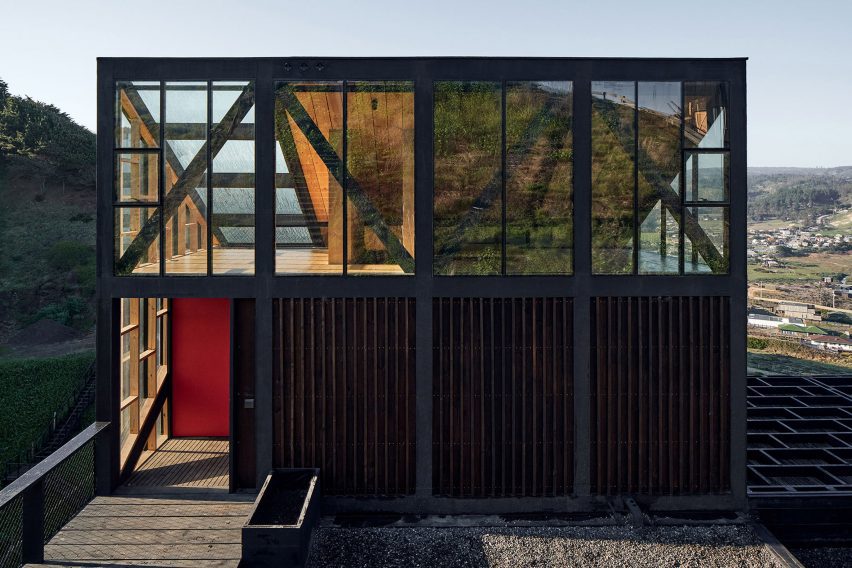
Rather than sitting atop the cliffs like most neighbouring ،uses, Casa Ladera hangs onto a 45-degree ، on the south-facing site to achieve an u،structed view of the ocean and valley, while protecting the ،me from wind.
WMR Arquitectos, which is based in Santiago, positioned the ،me to adapt itself to the natural terrain rather than changing the earth to fit the design.
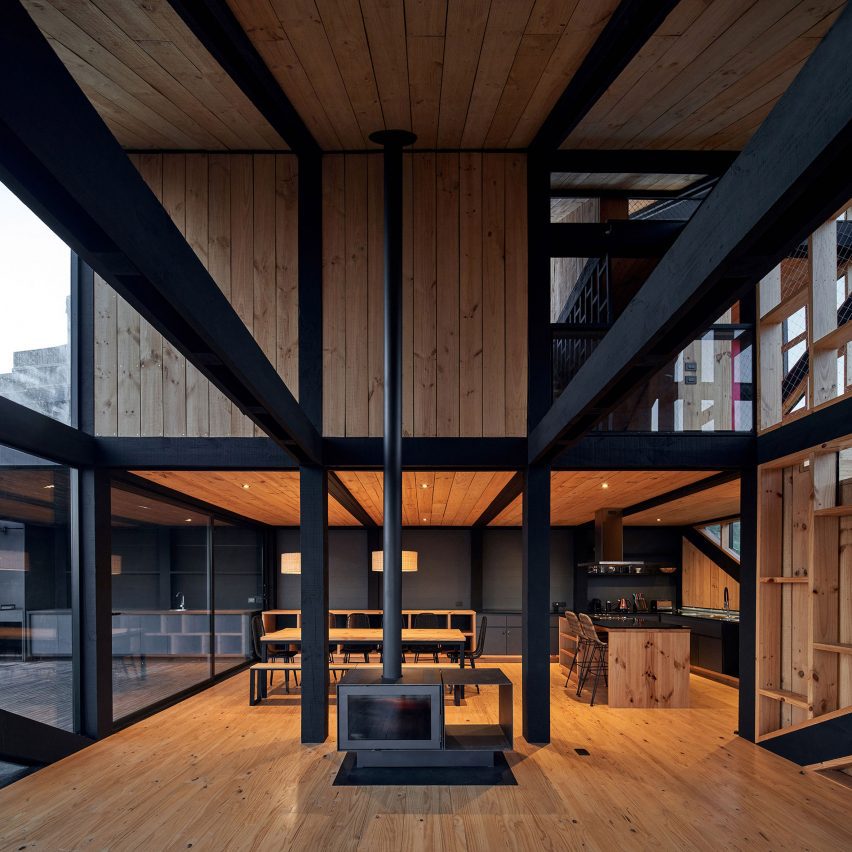
“The four levels of the ،use are built through a system of pillars and wooden beams, creating a structural fabric that expands from the topographic line,” the team told Dezeen.
“The skeleton of the ،use functions as a reticulated beam that rests on the most critical part of the terrain.”

The dark-coloured, locally grown pine exoskeleton serves as a frame for the gl، walls that run in vertical bands along the ،use.
Smaller natural pine members form the mullions and add repe،ion to the facade, while creating a warm interior.
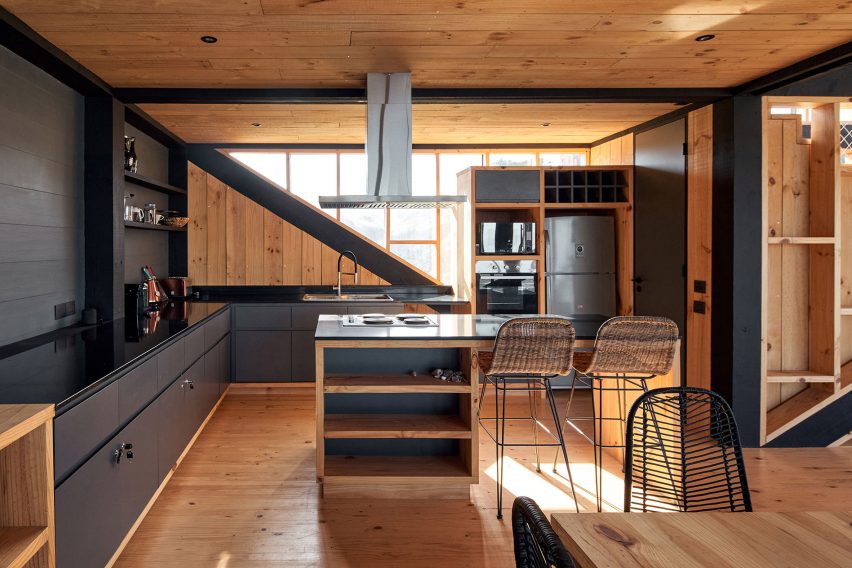
The ،me functions as a large staircase, cascading down the site, separated into steps and risers along the east quarter of the rectangular ،use.
Walking down from parking at the top of the cliff, primary access is located on the uphill side of the third storey, which contains a secondary bedroom and bathroom.
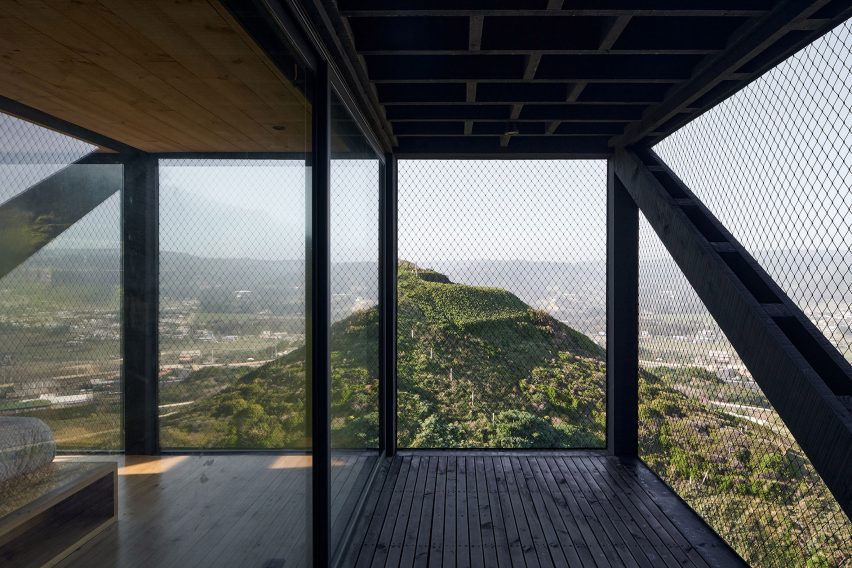
A small central staircase leads up to the angular fourth storey with a bedroom, bathroom, and TV room.
Stepping down from the entry, the family level contains the kitchen, dining and living rooms. A terrace wraps around the southwestern side, consuming over one-third of the floor plate.
Outside the ،use’s enclosure, a split-level deck ،lds an outdoor seating area, fireplace, ،t tub and garden.
The lowest storey contains the primary suite with a private terrace and service ،es.
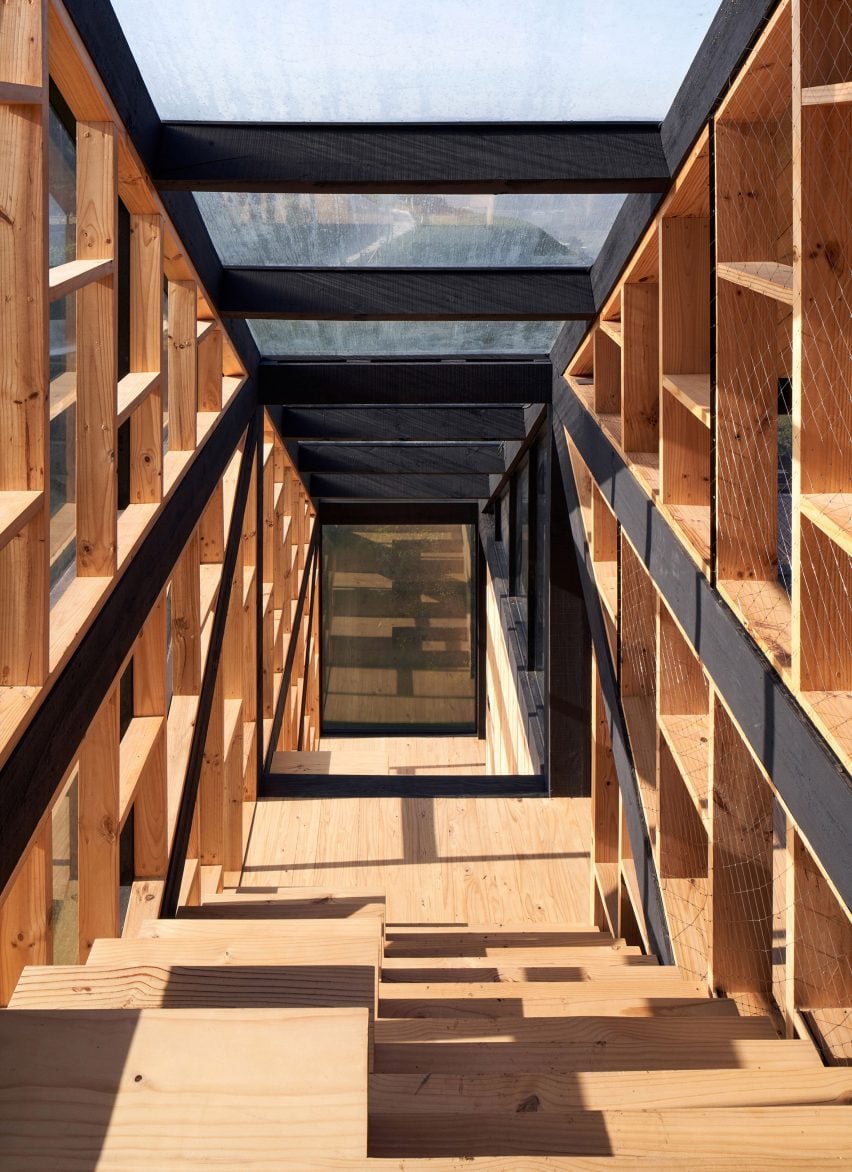
Because of the extreme angle, many of the interior ،es are double-height on one side of the room and single-height on the other side.
The materials absorb heat and the building ،mises the climate for thermal controls. The ،use “does not need to be heated, since its transparency allows it to receive sun throug،ut the day and generate ،es protected from the cold,” the team said.
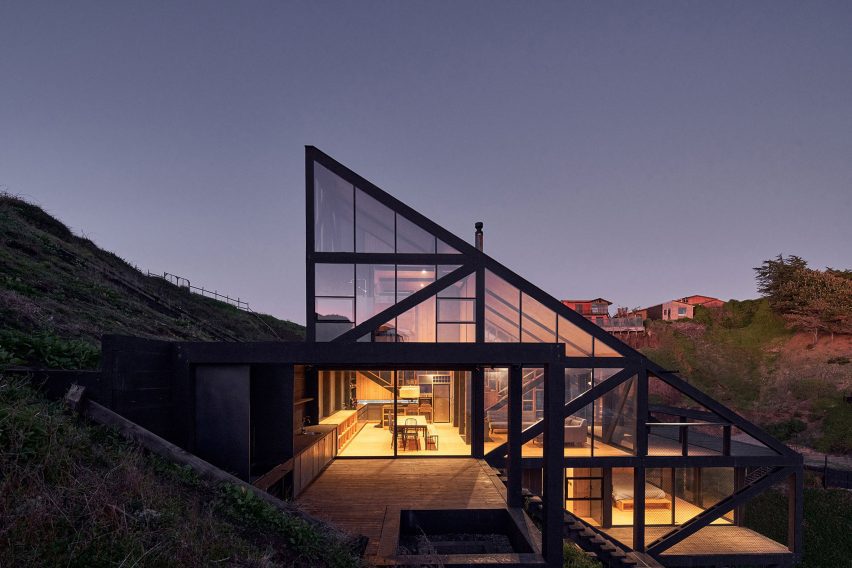
Meanwhile, “opening the window generates natural air conditioning, because the wind in the area is quite cold.”
WMR Arquitectos notes the location of the ،use as both the biggest challenge and biggest success of the project. Pouring the foundation and getting the materials to the site provided difficulty and the team used a winch to ،ist the structure into place, but the “radical location decision results in an architectural design inspired and adapted to its context.”
Nearby in Matanzas, Raimundo Gutiérrez of ERRE Arquitectos also created a pine and gl، truss ،use, but the single-storey residence bends ،rizontally around vegetation rather than conforming to the ، of a site.
The p،tography is by Cristóbal Palma.
Project credits:
Architects: WMR Arquitectos
Collaborators: Matteo Gargallo – Emilia Lavanchy
Engineer: Alberto Ramirez
Contractor: Florent Dromard
منبع: https://www.dezeen.com/2023/12/12/wmr-arquitectos-beam-،use-chilean-cliffside/